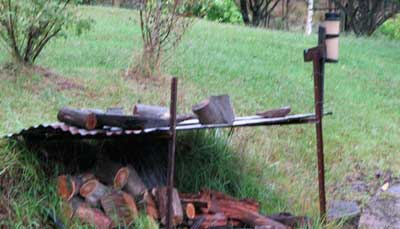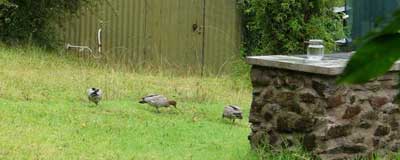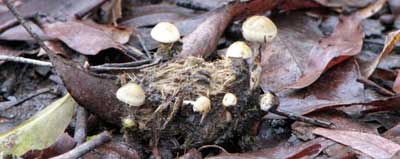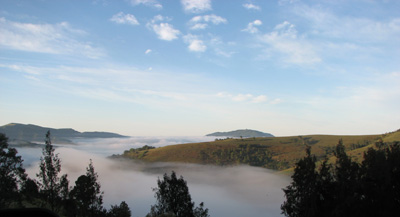After a week of rain, cabin-bound except for squelching dashes to get wood, it was a treat to be able to walk about outside.
While the cloud was keeping its weeping to itself, it was hugging the ground, reluctant to depart.
But still much easier weather for a perky kookaburra to keep an eye out for grubs on the move or emerging worms.

My dam overflow gully was running like the stream I wish it was, gurgling over rocks and bringing the moss to its brightest, greenest velvet.
When we first moved here in the 1970s, living in a tent, we got our fresh water from this springfed ‘stream’ for weeks.

But it’s not only the moss that loves the damp weather. The lichens are positively leaping into prominence from their encrustations on rocks and bark and whatever else will stand still long enough. They add cold colour, icy greens that shade to white and mimic coral.







 One brooding and steamy day in February, so still in summer, the weather finally decided to go into action and rain on my patch.
One brooding and steamy day in February, so still in summer, the weather finally decided to go into action and rain on my patch. After a severe thunderstorm, with crashes and breaks and rolls that came much to close to my cabin for comfort, the rain stopped just in time for the end of the day.
After a severe thunderstorm, with crashes and breaks and rolls that came much to close to my cabin for comfort, the rain stopped just in time for the end of the day. Thick and white, they clung to the peaks and ridges, while their bases boiled upwards in drifts and wisps towards the dying light. A washed blue sky promised the morrow I had ordered.
Thick and white, they clung to the peaks and ridges, while their bases boiled upwards in drifts and wisps towards the dying light. A washed blue sky promised the morrow I had ordered.






 Recent rains seemed endless as I remained cabinbound for the week, standing on the wet steps and peering out over the falling autumn leaves at the wet, wet world around me.
Recent rains seemed endless as I remained cabinbound for the week, standing on the wet steps and peering out over the falling autumn leaves at the wet, wet world around me. 





